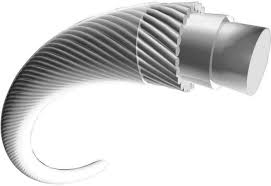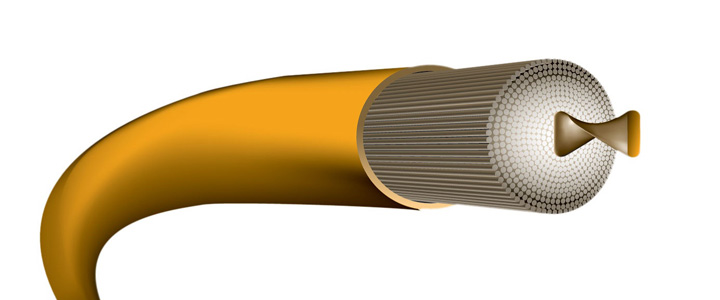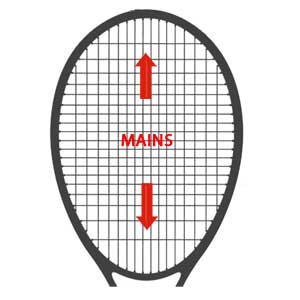![]() FREE SHIPPING for orders over $35
FREE SHIPPING for orders over $35 ![]()
If you have been around the game of tennis for a while, you might have noticed that the tennis industry has witnessed a rapid inflow of tennis string companies over the past few years. One of the main reasons for such an influx was technical advances in Asia, for example, Taiwan, which allowed the development of the highest quality products at very affordable prices.
It is still a common myth that only the leading brands in this space offer the best products. The power of marketing mainly feeds this perception. Seeing Roger Federer and Rafael Nadal represent Wilson© and Babolat© for big $ in TV commercials not only influences the tennis player in their decision-making process for buying well-branded strings but also specific razor blades.
Consequently, the string selection process often occurs by eliminating all the "no-name" brands and paying attention to what is being advertised or by receiving a recommendation from a coach or a racquet technician, again, sponsored by those same companies.
As in many industries, tennis has its enthusiasts who like to go beyond the status quo and are interested in finding their ultimate tennis string independent of brand recognition.
Certain tennis forums help newcomers decipher the maze of tennis string options by following experienced string testers' advice or reading other players' product reviews.
If a player does not want to follow the paradigm of "This must be the best string because Federer plays it," one has to make a rather educated decision to find a new string that truly fits ones playing level, style of play, etc.
For example, it is important to understand that a 55-year-old 3.5 NTRP would benefit from playing a different string than a 19-year Div I college player. Both players demand a very different objective from each string.
First and foremost, one has to decide the string material that fits best for one's situation. Different materials come with their advantages and disadvantages. Some of the questions players could ask themselves are:
These are only some questions that influence a player's string selection.
To help you better understand the selection process, we hope you will leave this article with the knowledge necessary to find a satisfying string match for your current tennis situation. Here is a brief overview of the most used string types to date. (Please note that advantages and disadvantages are usually compared to other string types! For example, synthetic gut strings are usually arm-friendly compared to polyester strings. Nevertheless, natural gut is probably the most arm-friendly string on the market).
If you had a chance to read our first article, "A Brief History of Tennis Strings," you might recall that to this date, many string experts still consider this string type as the "gold standard" in many respects. The main reason is due to qualities that any synthetic string has not fully replicated.
Due to its significantly lower price compared to natural gut, it is an affordable choice for recreational players. The string industry differentiates between nylon and synthetic gut although most of the time both strings are produced from the same basic material - a form of polymades. The quality and price of the string are usually defined by the quality/grade of the polymade and the structure of the string.

Although some synthetic gut strings could be considered multi-filament strings (= multiple thin string fibers combined to one string vs. mon-filament = one single string fiber), we want to pay special attention to a nylon-based string called "multifilament strings." Those types of strings are usually constructed by hundreds or even thousands of micro-fibers, which drastically enhances the string's quality. The idea of such string production is to create a close resemblance to a natural gut string.

Polyester is the newest string material. Over the past decade, it has quickly become the go-to string for high-level players. One can say that this string truly revolutionized the game of tennis to how it is being played today. Who would have thought 25 years back that a player could ever generate a ball spin up to 5000 RPMs? Polyester strings are always mono-filament strings, meaning that the string is one single strand.
- Why do I often read co-polyester? It just means that the foundation is polyester and the string manufacturer uses additives to alter the characteristics of the string, for example, to soften the string, and increase durability and tension stability.
- Polyester strings often come in different shapes, hexagonal, octagonal, etc. The main reason for altering string shapes is to increase access to spin/ball bite.

We understand there are other string materials on the market like Kevlar but they are being represented rather insignificantly in the tennis string industry.
String material strongly defines the main string characteristics a player is looking for, nevertheless, string gauge and string tension can significantly influence a string's performance.
A string gauge defines the thickness of a string. If you are new to the concept of gauges, they work counterintuitively. Strings with a lower gauge number are thicker than strings with a higher gauge. For example, an 18 gauge string could be 1.2 mm in diameter, whereas a 16 gauge string could be 1.30 mm. Most popular string gauges are between 16g-18g, although you can sometimes find a 15g or 19g.
Side Note: A string gauge selection can be essential for polyester strings due to its short-lived elasticity. Arm-friendliness is reduced significantly after playing for more than 10 hours. Thus, we would recommend starting with a 17g string. If it lasts less than 6 hours, we recommend switching to a 16g. If the string lasts longer than 15 hours before breaking, we recommend switching to an 18 gauge.
A hybrid string setup means the racquet is being strung with two different strings in the mains and crosses. The purpose behind such a setup is an attempt to unify the best characteristics of 2 different string types in one string job. The most popular hybrid setup is to put a polyester string in the mains of the racquet and a natural gut/high end multifilament string in the crosses.
Suppose you go back and check the advantages and disadvantages of these two string types. In that case, you could theoretically conclude that such a setup will increase feel and arm-friendliness due to the natural gut/multifilament string but increases durability, control, and access to spin due to the polyester string in the mains.

At first, we look at age. Players under the age of 11 and above 65 usually do not receive polyester string recommendations due to its stiffness and potential harshness to the arm.
Then we ask for the 3 top characteristics the player is looking for in a string. If arm-friendliness is a priority, we will not recommend a full set of polyester. If arm-friendliness, access to spin, and durability are the three key factors, then we would most likely suggest a hybrid setup.
Then we look at the level of play. If a 25-year-old former DIV 1 college player is looking for a string recommendation, our first thought is a full set of polyester. What type of polyester string then depends on the string characteristics this player is looking for. If durability is important, we will recommend our most durable string at 16g.
String gauge recommendation is often decided by the player's age and level of play. For example, if a 55-year-old 4.5 NTRP is looking for a durable polyester string, we would usually recommend the string in 17g. On the other hand, for a 17-year-old ITF player, we would probably recommend a 16g string.
How about a 35-year 4.0 NTRP where durability is not a priority, but spin potential and power are? We would most likely recommend our triangular co-poly string in 18g.